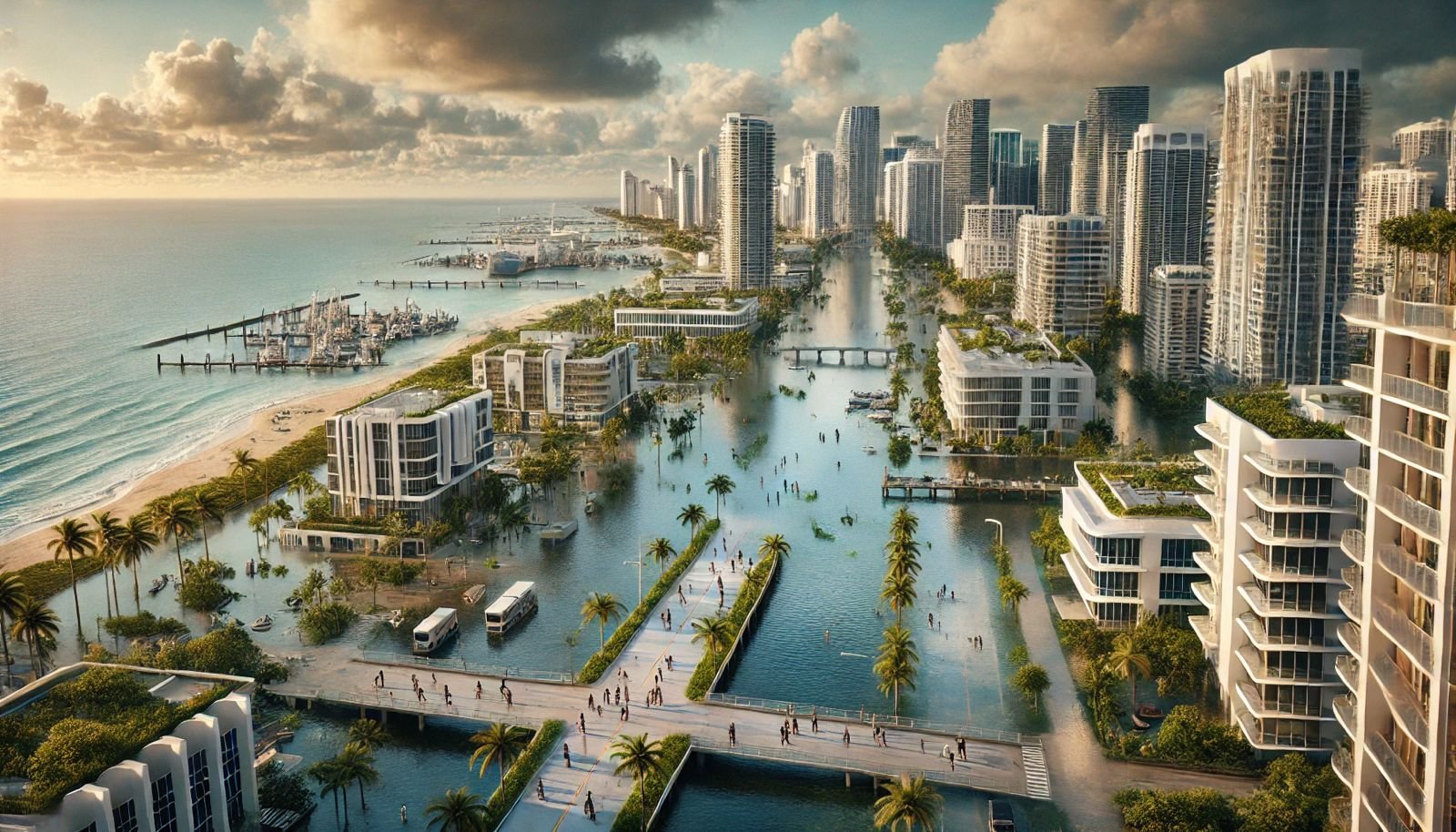Is Miami a ground zero for climate change?
From once being the saga of beautiful beaches and a lively culture, Miami is becoming increasingly known as a climate change ground zero, largely because of its unique position in geography with low elevation and high risks from rising sea levels and extreme weather events. As this city faces these problems, it becomes a critical case study for understanding larger implications of climate change on the urban environment.
The Risks in Miami
A raft of recent studies has starkly highlighted Miami's spectacular exposure to climate-related risks. A report by real estate company Cushman & Wakefield ranked one of the highest climate risk scores among major cities around the globe, indicating very significant threats from flooding, heat, and drought. At Miami, the low elevation, often less than four feet above sea level, makes it especially vulnerable to flooding as well as saltwater intrusion into freshwater sources and infrastructure.
Moreover, Miami is directly placed at the coastline, and thus it faces both the existing impact of sea-level rise as well as the future impact of climatic change. Saltwater actually entered several miles inland in some areas, putting the region's source of water supply at risk while raising the dollar price of repair and adaptation for infrastructure2. As business people and residents continue to make investments in properties along the waterfront, the likelihood of disastrous loss becomes more imminent.
Community Responses and Adaptation Strategies
As a result of these emerging challenges, local leaders are bulding resilience. For example, Coral Gables is building a Sustainability Task Force that will create a ten-year plan with focus on sea-level rise of over four feet. That will mean building retrofits for extreme weather events and push the citizenry toward sustainable habits like public transportation and renewable energy. Just as Seattle Green Maids established their own brand of ecological practices within communities, Miami does the same and calls for a change towards a better future.
Miami Beach also invested heavily in infrastructural upgrades to avoid flooding, including improvements in the drainage system and reinforcing areas that will absorb excess surface water. As part of these strategies, their overall plans involve working with leaders in the institutions to develop strategies to fight both the current and the emerging problem of climate change in the city. Such strategies come with appropriate cleaning, such as sand-cleaning practices, which builds a resilient adaptive city.
Role of Education and Community Engagement
Preparing for realities of climate change- Most inhabitants of Miami are still well-equipped to handle the challenges of climate-related actions since education is the most fundamental factor. For example, local organizations are the primary driving forces behind the activities focused on increasing awareness about environmental sustainability and challenging community participation in sustainability activities. For example, youth activists are rallying their peers for a call to reduce carbon emission levels and join local climate action programs.
In addition, a university like University of Miami carries out researches that attempt to understand the complexity of climate change effects on the urban environment. They collaboratively cooperate with local governments and communities to design innovative solutions at different levels of societies.
A Model for Other Cities
Despite the tough odds, Miami stands as a city beacon for other coastal cities since it faces and tackles such rare issues together. Instructive to urban planning policies in Seattle and many other comparable cities can be sustainable and resilience efforts on the part of the city itself, like, for instance, how Seattle can draw lessons from Miami's improvement in infrastructure with resilience for achieving community engagement in environmental projects.
Besides the physical changes, more and more people are coming to realize that climate change should be taken on as a collective responsibility among the different strata of society. This is not only between local governments but also shared with the support of businesses, educational institutions, and its residents in order to pursue common causes.
Conclusion
Miami stands at the crossroads in this fight by the country against climate change. Labelled "ground zero" because of its vulnerabilities, the city is apparently taking proactive steps toward sustainability. This is similar to Deep Cleaning Seattle, which embraces a community-based approach toward environmentally friendly practices. Miami happens to be one example that shows how urban areas can take up climate threats with innovative solutions. By playing up the strength of resilience, Miami, for example could become an example to cities in its predicament and prove that it is still possible to be sustainable and can act with resolve even amidst daunting odds.
Reflecting on Miami's journey reminds us of Seattle's commitments to an eco-friendly lifestyle, with initiatives such as Deep Cleaning Seattle toward a resilient city in promoting sustainable living and preparedness for future climates and cities. Though Miami of today may feel at the front line of climate impact, it is commitment to sustainable transformation that may well open pathways for other cities striving effectively to mitigate.
